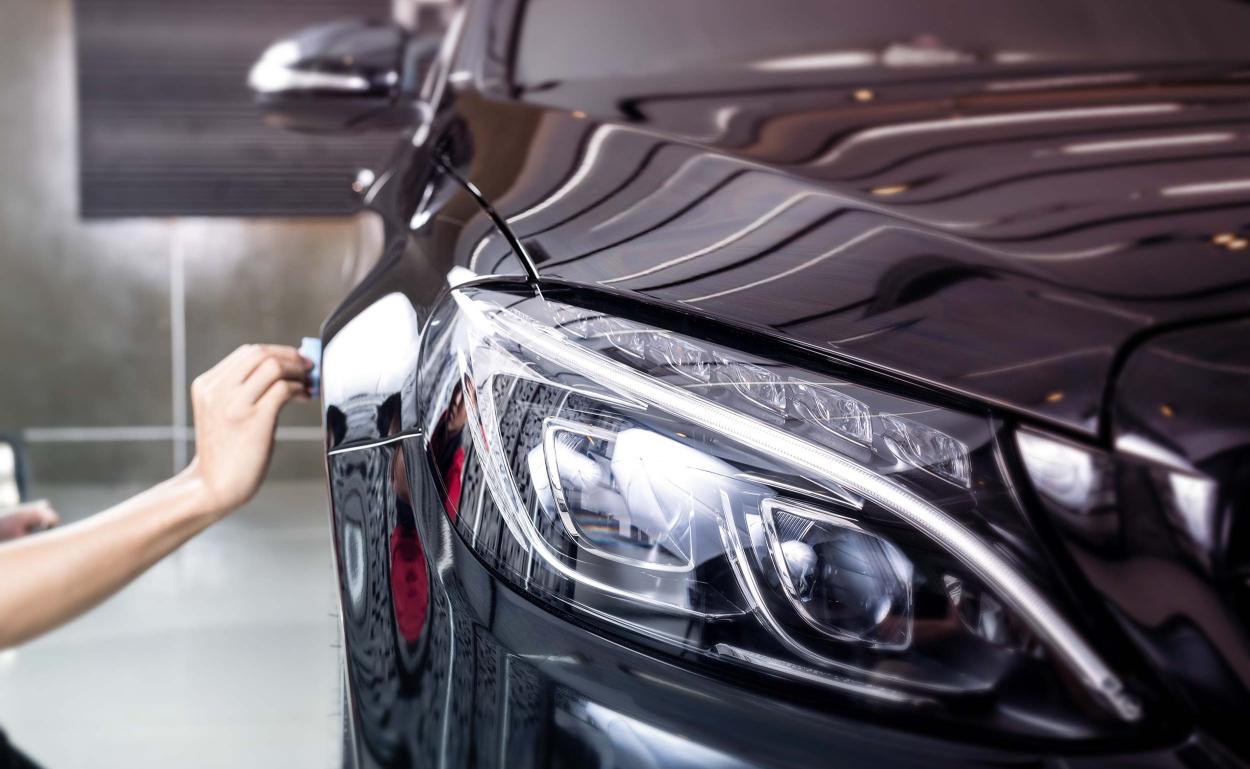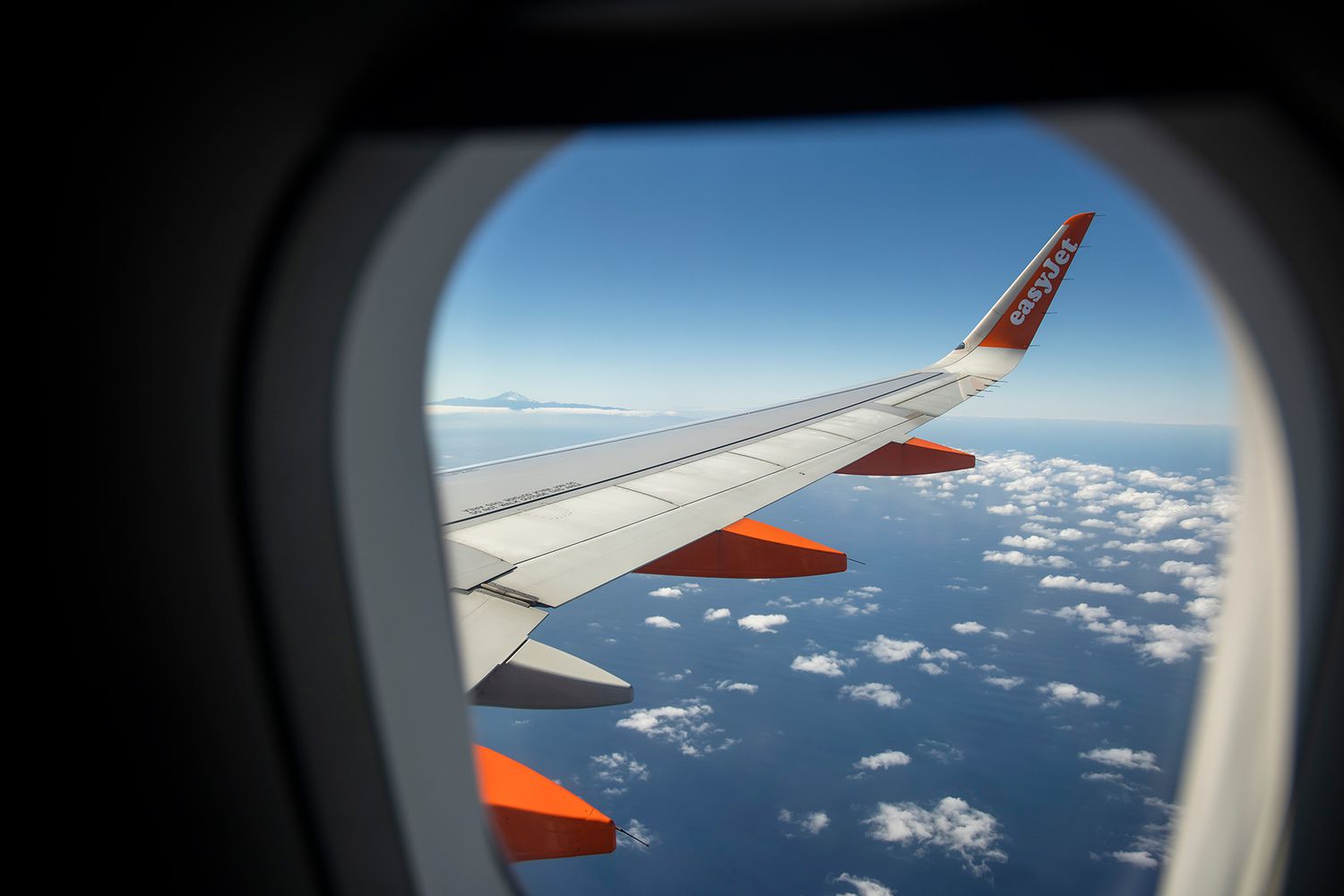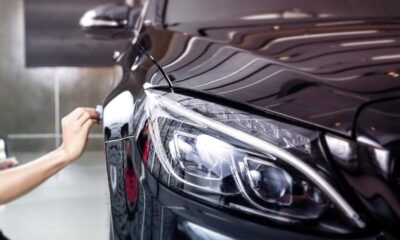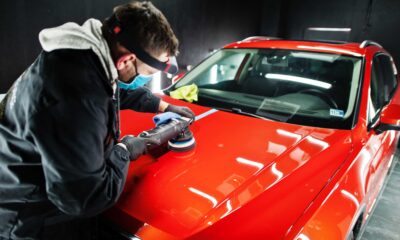Auto
New Charging Points for Electric Cars to Boost EV Uptake in East Sussex

Lewes, East Sussex – Lewes District Council has announced the installation of 64 new electric vehicle (EV) charging points across 11 car parks in the area, as part of a 15-year agreement with Connected Kerb, a leading provider of EV charging infrastructure. The initiative is aimed at increasing electric vehicle adoption, improving air quality, and providing much-needed charging access to residents who are unable to charge their vehicles at home.
The project includes the replacement of existing rapid charge points at Lower Place and Phoenix Causeway, ensuring that the district’s infrastructure remains up-to-date and capable of meeting the growing demand for EV charging.
Councillor Emily O’Brien, Cabinet Member for Climate, Nature, and Food Systems, emphasized the importance of the initiative in supporting the local community’s transition to greener transportation. “We want to make it easier for local people to do the right thing for the environment,” she stated. “By putting affordable charge points into our car parks, we make it much easier for those people to take that step towards a greener future.”
The initiative aligns with the UK government’s ambitious target of 300,000 public charging points nationwide by 2031, a key component of the country’s broader strategy to reduce carbon emissions and promote sustainable living.
Cllr O’Brien highlighted the feedback from residents, many of whom are eager to switch to electric vehicles but have been deterred by the lack of accessible charging options. “I’ve heard from many people who want to get an electric car and can afford to do so, but they don’t go ahead because of lack of access to chargers or to off-street parking where they can install one,” she explained.
The new charging points are expected to significantly alleviate these concerns, making electric vehicles a more viable option for a broader segment of the population in East Sussex. The council’s partnership with Connected Kerb marks a significant step towards achieving local and national environmental goals, fostering a cleaner, more sustainable future for the community.
As the installation of these charging points progresses, residents and visitors alike can look forward to easier access to electric vehicle charging, paving the way for increased EV adoption and a reduction in the region’s carbon footprint.
Auto
Saving Money on Summer Car Detailing While Keeping Your Vehicle in Good Shape

Summer car detailing is essential to maintain your vehicle’s appearance and protect it from the harsh effects of the sun, heat, and environmental contaminants. However, the costs can add up quickly if you’re not careful. Here’s how to save money while keeping your car in top condition during the summer months.
1. DIY Car Washing
- Wash It Yourself: Washing your car at home instead of going to a professional service can save a lot. Invest in a good quality car wash soap, microfiber towels, and a bucket. Avoid dish soap as it can strip away wax and damage the paint.
- Use the Two-Bucket Method: This reduces the chance of scratching your paint. One bucket is for soapy water, and the other is for rinsing your dirty wash mitt.
2. Protect the Paint
- Apply a High-Quality Wax or Sealant: Waxing your car protects the paint from UV rays, bird droppings, tree sap, and road debris. Consider using a spray wax, which is quicker to apply and can be done at home.
- Park in the Shade: Whenever possible, park your car in the shade to prevent the sun from damaging the paint and interior. This reduces the frequency of washing and waxing.
- Use a Car Cover: If you don’t have access to covered parking, invest in a car cover. It protects your car from sun exposure and other environmental damage.
3. Interior Care
- Clean Regularly: Regularly vacuuming and wiping down surfaces will keep dirt and debris from becoming embedded in carpets and upholstery, extending the life of your interior.
- Use Homemade Cleaners: Save money by making your own interior cleaners. A mixture of water and white vinegar is effective for cleaning windows, and a mild dish soap solution works well for upholstery.
- Protect Your Dashboard: The sun can cause your dashboard to crack and fade. Use a sunshade when parked and apply a UV protectant to maintain the dash’s condition.
4. Wheel and Tire Maintenance
- DIY Tire Shine: Instead of buying expensive tire shine products, make your own with water and a small amount of baby oil. It’s cost-effective and gives a nice shine.
- Regular Cleaning: Clean your wheels and tires frequently to prevent brake dust and grime buildup, which can lead to corrosion. A simple solution of water and dish soap is usually enough.
5. Preventative Maintenance
- Check Fluid Levels: High temperatures can cause your car’s fluids to evaporate faster. Regularly check and top up engine oil, coolant, and windshield washer fluid to prevent costly repairs.
- Inspect and Maintain Air Conditioning: Running your AC more often in the summer can strain the system. Ensure it’s running efficiently by regularly checking for leaks and replacing the cabin air filter.
6. Plan Ahead for Professional Detailing
- Look for Deals and Coupons: If you need professional detailing, look for discounts, promotions, or seasonal offers. Many detailers offer lower prices during weekdays or slow business periods.
- Bundle Services: Some shops offer discounts if you bundle services like waxing, interior cleaning, and engine bay cleaning.
7. Use Efficient Products
- Opt for Long-Lasting Products: Invest in long-lasting waxes, sealants, and ceramic coatings. Though they may have a higher upfront cost, they reduce the frequency of applications, saving you money in the long run.
- Waterless Wash Products: These are great for quick clean-ups and don’t require a hose. They are efficient in saving water and can be used on the go.
By taking a DIY approach, getting help from Detailing Studio Chicago using homemade solutions, and being mindful of where and how you park, you can keep your car looking great all summer long without breaking the bank. Regular maintenance, both inside and out, ensures that your vehicle stays in prime condition, saving you from more expensive repairs down the line.
Auto
American F1 Driver Logan Sargeant Unscathed After Fiery Crash During Dutch Grand Prix Practice

Logan Sargeant, the American Formula 1 driver, walked away unscathed after a dramatic crash during practice at the Dutch Grand Prix on Saturday. Sargeant lost control of his Williams Racing car, which slammed into a wall, crumpled on impact, and erupted in flames.
Immediately following the crash, Sargeant remained in the cockpit momentarily, reassuring his team over the radio, saying, “I’m good.” However, his race engineer quickly urged him to exit the car, having spotted flames emanating from the vehicle’s rear. Sargeant swiftly vaulted out of the smoking car and made his way to the side of the track as the session was promptly red-flagged.
Williams Racing confirmed that Sargeant was unharmed but announced that the damage to the car was too extensive to repair in time for the qualifying session. “The team will continue to repair and build his car in preparation for race day,” Williams Racing said in a statement on social media platform X, formerly known as Twitter.
The incident comes at a critical juncture for Sargeant, who has yet to score a point this season. This Grand Prix was his first since Williams announced that he would be replaced by Spanish driver Carlos Sainz for the next season. Sargeant joined Williams at the beginning of the 2023 season, making history as the first American driver in 30 years to score points in an F1 race, achieving a 10th-place finish at the United States Grand Prix.
In the subsequent qualifying session, Lando Norris secured the fastest time, earning pole position for Sunday’s race. Reigning champion Max Verstappen will start in second place, with Oscar Piastri rounding out the top three. Seven-time world champion Lewis Hamilton faced disappointment, exiting in the second round of qualifying and will begin the race from 12th on the grid.
Auto
Rising Turbulence Incidents Force EasyJet Flight to Divert After Crew Injuries

Incidents of in-flight turbulence are on the rise, and another airline has had to divert after severe turbulence caused injuries to crew members. On August 19, EasyJet flight 8210, traveling from Corfu to London Gatwick, was forced to make an emergency diversion to Rome after encountering turbulence over Italian airspace that left two crew members injured.
The Airbus A320, which had reached speeds of 500 knots (575 mph) and altitudes of 31,000 feet, encountered the turbulence as it entered Italian airspace. The turbulence was severe enough that the captain decided to divert the flight to Rome, where the injured crew members were met by medical services.
According to an EasyJet spokesperson, “Flight EZY8210 from Corfu to London Gatwick on 19 August experienced turbulence which unfortunately resulted in two cabin crew members being injured. As a result, the Captain took the decision to divert to Rome where the crew members were met by medical services. The safety and wellbeing of our customers and crew is EasyJet’s highest priority, and our pilots are trained to manage incidences of turbulence.”
The spokesperson added that the flight landed normally in Rome, where passengers were assisted in the terminal while a replacement crew and aircraft were arranged to continue the journey to London Gatwick. The passengers eventually arrived in the UK on the same day, with no reports of injuries among them. The seatbelt signs were reportedly on during the turbulence, likely preventing further injuries.
Italy’s national aviation safety agency, the Agenzia Nazionale per la Sicurezza del Volo (ANSV), confirmed that the flight encountered turbulence upon entering Italian airspace and announced the opening of a safety investigation, classifying the event as an accident due to the nature and severity of the injuries sustained by the crew.
Turbulence has been a growing concern for the aviation industry, with the Federal Aviation Administration (FAA) noting that it is the leading cause of nonfatal injuries to flight attendants and passengers. The US National Transportation Safety Board and the National Center for Atmospheric Research estimate that turbulence costs US airlines up to $500 million annually due to injuries, delays, and damages. Experts warn that turbulence is expected to worsen as the climate crisis progresses.
This year alone, turbulence has caused multiple injuries and even fatalities. In July, 30 passengers were injured on an Air Europa flight from Madrid to Montevideo, and in May, a British man died, and over 70 passengers were injured when a Singapore Airlines flight hit severe turbulence and made an emergency landing in Bangkok.
Passengers on EasyJet flight 8210 were fortunate to escape unscathed, a reminder of the importance of keeping seatbelts fastened at all times during a flight.
-

 Business1 year ago
Business1 year agoSaudi Arabia’s Model for Sustainable Aviation Practices
-

 Business1 year ago
Business1 year agoRecent Developments in Small Business Taxes
-

 Politics1 year ago
Politics1 year agoWho was Ebrahim Raisi and his status in Iranian Politics?
-

 Business11 months ago
Business11 months agoCarrectly: Revolutionizing Car Care in Chicago
-

 Business11 months ago
Business11 months agoSaudi Arabia: Foreign Direct Investment Rises by 5.6% in Q1
-

 Technology1 year ago
Technology1 year agoComparing Apple Vision Pro and Meta Quest 3
-

 Politics1 year ago
Politics1 year agoIndonesia and Malaysia Call for Israel’s Compliance with ICJ Ruling on Gaza Offensive
-

 Sports10 months ago
Sports10 months agoKeely Hodgkinson Wins Britain’s First Athletics Gold at Paris Olympics in 800m




























